The official schedule for South by Southwest 2015 had over 1800 bands. A band I met in the airport in Boston had won their place among the 1800 by entering a contest with 300 other bands vying for 11 spots in a performance round with 1 winner. The math is daunting.
The event itself is also daunting. Some of those 1800 bands play multiple times over the course of a few days, so at any given moment there can be dozens of performances happening simultaneously, spread out over a wide area of Austin.
The core of the experience, though, takes place in a club- (and makeshift-club-) lined stretch of 6th Street that becomes, for a few days, a near-solid mass of people. This is an unusually uncrowded moment from a rain-thinned moment early in the week.
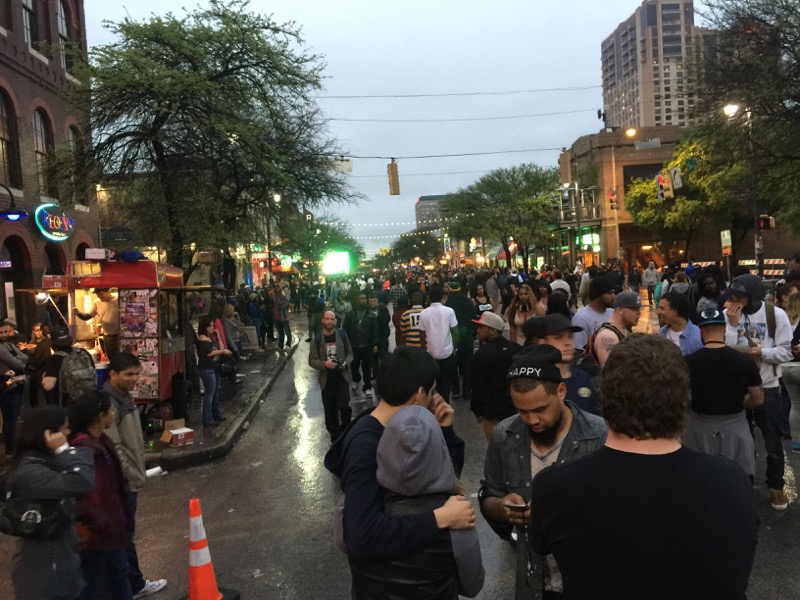
I learned quickly that my stubborn plan to dart obsessively from show to show relied on making east/west transitions on 5th or 7th street. SXSW badges allow you to skip the lines and breeze in and out of any venue, provided you can reach them, and I had a badge from having been on a discussion panel at the beginning of the Music conference, so my project was to see as many bands as I physically could.
This wasn't quite what I accomplished, as there were a few times when I was tired enough by some point in the night that I gave up and actually sat through a bandless set-change in between two bands I wanted to see, rather than trying to squeeze in another band somewhere else. But I did see 50 bands over the course of 4 days. Not always full sets, and even the "full" SXSW sets are often short, but that 50 counts only bands whose names I knew, and was seeing on purpose, not all the incidental music I wandered through.
The music at SXSW is by no means equally distributed across the whole world's genre space, but there did seem to be at least a little of enough different things to be close enough. Even my own tiny sample included bands from Austin, Boston, Brooklyn, LA, Canada, Chile, Ghana, Korea, Taiwan, Sweden, Spain, Ireland, England, Scotland, Italy, Australia and Norway, at least, and from gleaming pop to diffident avant-garde to cyclic electronica to shredded metal.
If there was a single overarching theme to my own arbitrary 50/1800ths sample of the festival's music, it was backing tracks. Almost nobody I saw didn't have at least some prerecorded material or triggered samples mixed in with their live-performance elements. If the audiences were often fractionally present behind status posts and picture-taking, the bands were similarly at once here and symbolically here, partly performing and partly alluding to themselves by association.
At the extreme of this were the shows by various members of the PC Music collective, which were entirely knob-twiddling DJ sets. One might reasonably wonder whether this constitutes "performance" in the traditional sense. Indeed, I had no way to know whether the people on stage gingerly turning tiny knobs while bobbing industriously with the non-finger parts of their bodies were actually the people involved in the creation of the music. Nor, for that matter, whether the knobs were even connected to anything.
But there was a crowd of people there. And they were definitely dancing, there in the glittering dark, to whatever it was.
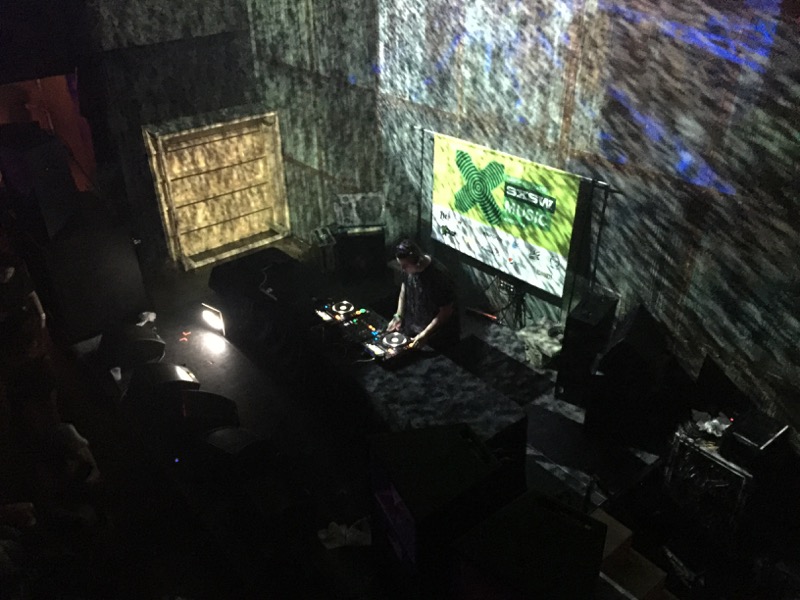
My own personal motif turned out to be Swedish women singers accompanied by scruffy sequencer-operating Swedish dudes. There were at least 6 of these at the festival, and I saw 4 of them, starting with the tiny, amazing Frida Sundemo.
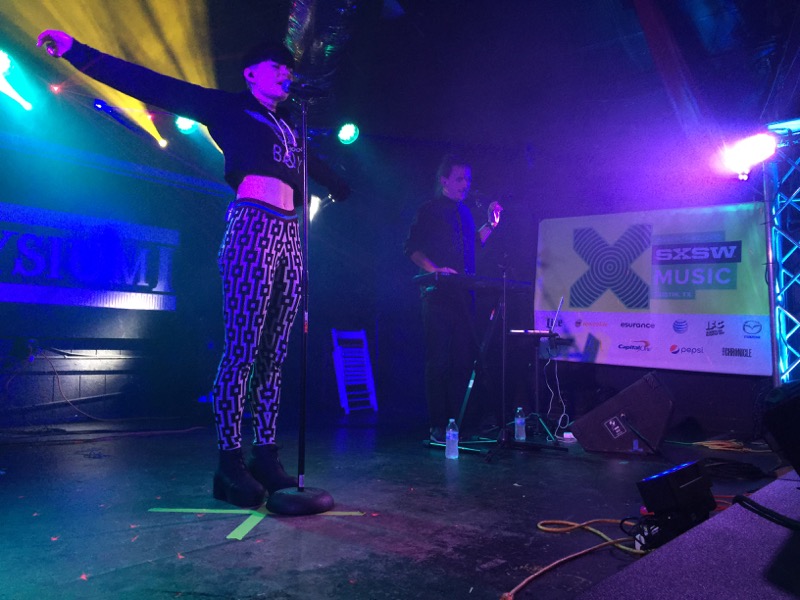
This is arguably only one small step up from DJ sets, epistemologically, as Frida doesn't even move around a lot. She sings, but she does that on the recordings, too. Maybe the purpose of the concert was more for her to see us. Although if so I wish there had been more of us. This same venue had maybe 10 times as many people for the K-Pop showcase the following night.
Of the other Swedes, I didn't get pictures of the quirk-poppy Tove Styrke or the ethereal Swedish-Iranian singer Laleh, and I didn't see Tove Lo or Seinabo Sey. There were 7 if you count Kate Boy, who have an Australian singer and two Swedish dudes with matching jackets and a lot of percussion controllers and an energy-level bordering perilously on hyperventilation.
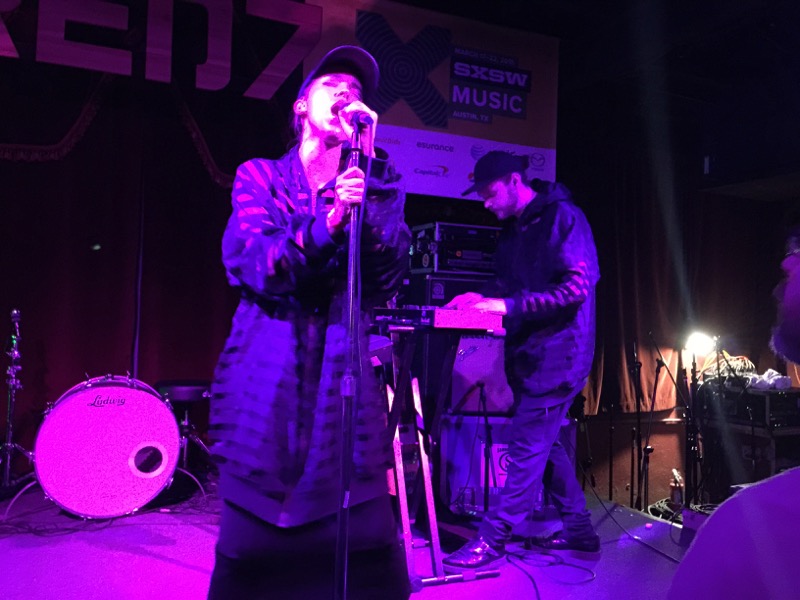
At one point I went from one of these Swedish shows straight to an African showcase (grabbing either an Australian pie or a Peruvian pork sandwich on the way, I forget which), and the Ghanaians Samini and Sarkodie both had multiple layers of backing tracks, too, but also had 20-25 people on stage at a time. A few of these were playing instruments or operating musical equipment, but a lot of them were just standing around checking their phones or arguing with each other about grammar (I assume). I guess this is how you do it in Ghana.
The most underrated features of the festival, in my opinion, were the two daytime stages inside the Austin Convention Center. The big one, from which radio simulcasts were being broadcast, was a cavernously corporate room with absolutely no personality, but excellent acoustics and reasonably comfortable seating. I enjoyed seeing the haunting Twin Shadow there much more than I enjoyed seeing them at the Spotify House the previous day amidst roiling crowds of people sparring for free food, and when Zella Day played the room I could easily imagine that the rows of orderly conference-goers were all bitter execs from the major labels she didn't sign with.
The second stage, awkwardly wedged into a much smaller room down the hall, featured a cheerfully bizarre assortment of "international" acts, and rewarded my curiosity every time I dropped by in between other events. My favorite discovery from here was the Taiwanese trad-crossover group TOFFEE, who perform with spike violin, zither, pop backing tracks, a pop lead singer and a (goofily) rapping MC.
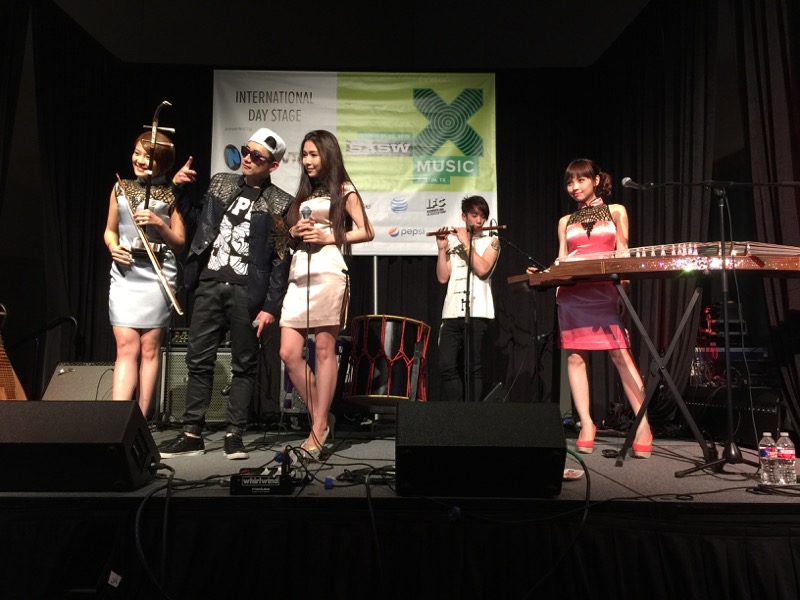
The only way to manageably attend an 1800-band festival is to set some ruthless priorities. The top band I wanted to see was the plaintive Scottish rock group Fatherson, and the rest of my schedule moved backward and forward in time and space from their show at the North Door.
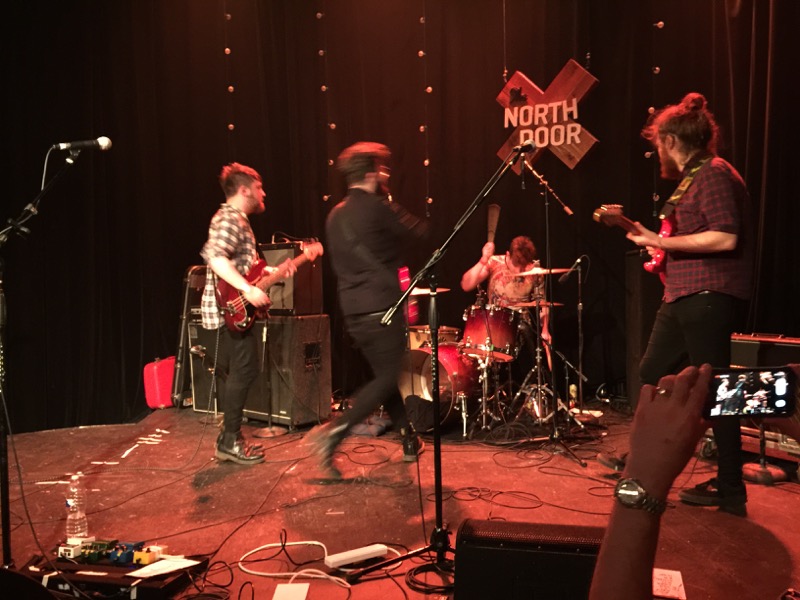
There have been a number of bands, over the years, that I have mentally considered to be the best ROCK band of the moment, and Fatherson are my current pick and the third one from Scotland (after Big Country and Idlewild). They make thick, life-affirming noises, and sing in thick accents. My wife has been spelunking through ancestry.com of late, and progressively downgrading the amount of actual Scottish heritage in my family tree (patronymy aside, I am more Sicilian than anything else), but if you measure by visceral acoustic resonance, I am plainly recently arrived from Skye or Inverness or something.
The best show I saw all week, as I could not have anticipated (or maybe I could have but didn't do enough research), was Inuk throat-singer Tanya Tagaq, who comes from one of the southern suburbs of the North Pole, and appeared in Austin with a ceaseless drummer, a violinist with a pile of effects pedals balanced precariously on a chair, and some kind of semi-fitted blanket.
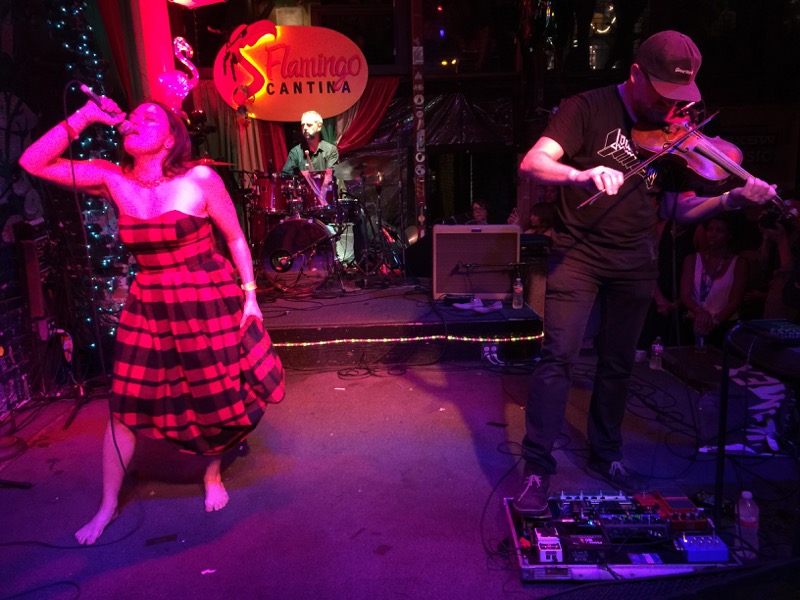
On record Tanya sings with an arresting style, but still organizes the noises into individual songs. On stage, though, she mostly dispenses with this structure. The drummer starts drumming, the violin guy manages some other sounds, and then demons begin audibly erupting out of her. She writhes, the demons coil and lash and retract. It continues until they are either all subdued or all released, I'm not sure which. And then, after a short pause, it all happens again for a few more minutes. This was probably the most emotionally intense live performance I've seen since the first time I saw Tori Amos more than 20 years ago. And Tagaq's music is not metal, but this was by far the most metal thing I've seen in years.
The second most astounding show I saw was metal, at least somewhat: the largely-instrumental post-rock/metal trio Stinking Lizaveta. I knew and liked them OK from records, but only dropped in to see them because they were on my way from one thing to another. I didn't realize, first of all, that they're older than I am. Like, old enough to have the demeanor of genial grandparents who don't care what you think of their fashion sense.
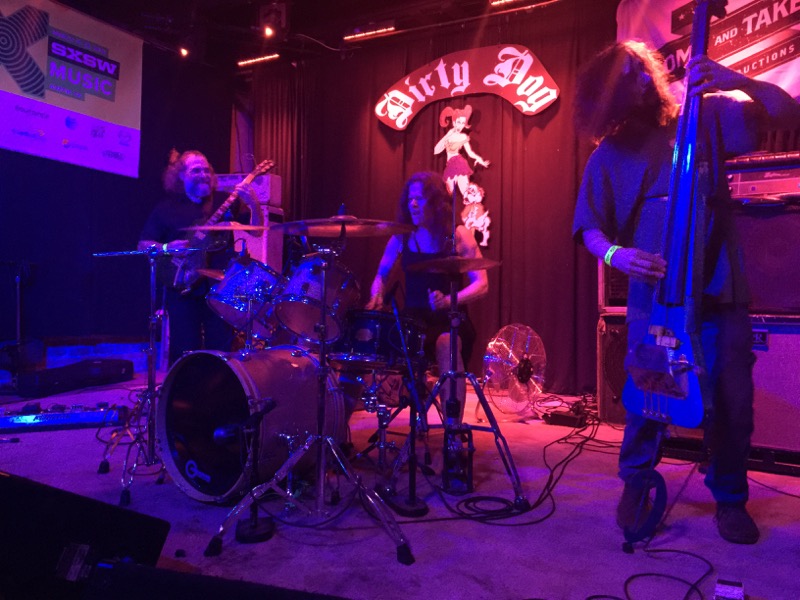
And then they start playing, and if Tanya Tagaq's style is elemental, Stinking Lizaveta's is feral. Cheshire Agusta is probably not the only female post-rock/metal drummer, but she's the only one I saw at SXSW, and the only one I know who seems to play her cymbals by shouting at them with percussively palpable menace. The bass player plays a battered solid-body upright bass with parts held together by duct tape, and the guitarist jumps around with the geeky energy of an IT guy who just got a lot of boxes of network gear you don't even recognize. As with Tagaq, their live set is not particularly song-bound. As with falling off a cliff into a tornado, you'll want to have ear-plugs but that's hardly the most pressing issue.
But the soul of SXSW, and maybe of modern human existence, is that you are paralyzed by awe for an eternal moment, but then it's over and you go listen to something entirely different. At a handful of points in the week I had gaps without any available bands I already knew, and so made semi-random selections based on festival-guide blurbs and physical proximity. My favorite of these turned out to be the bubbly UK band Juce, who are kind of what the Spice Girls might have become if they'd played their own instruments and sewn their own outfits and liked Prince more.
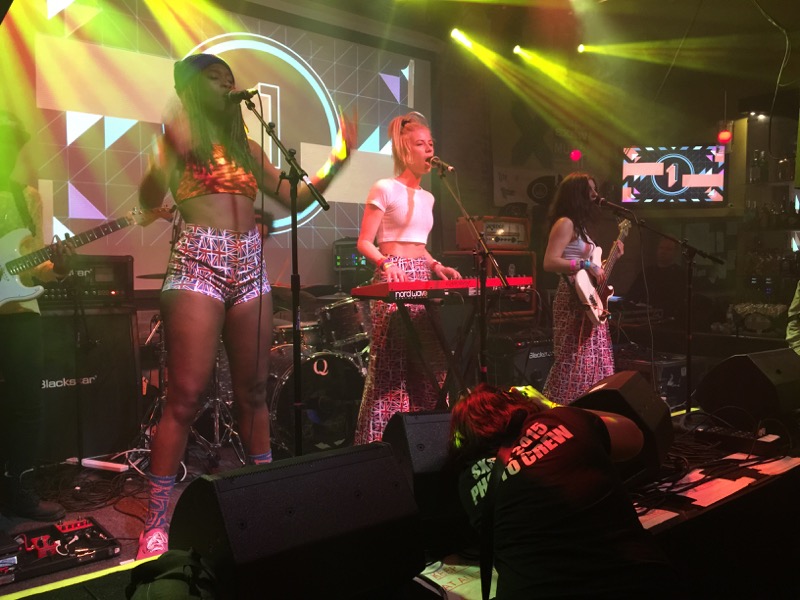
Music follows you around at SXSW. You go back to your hotel to take a break for an hour and there are bands playing unofficial bonus shows in your hotel bathroom. Or atrium, anyway.
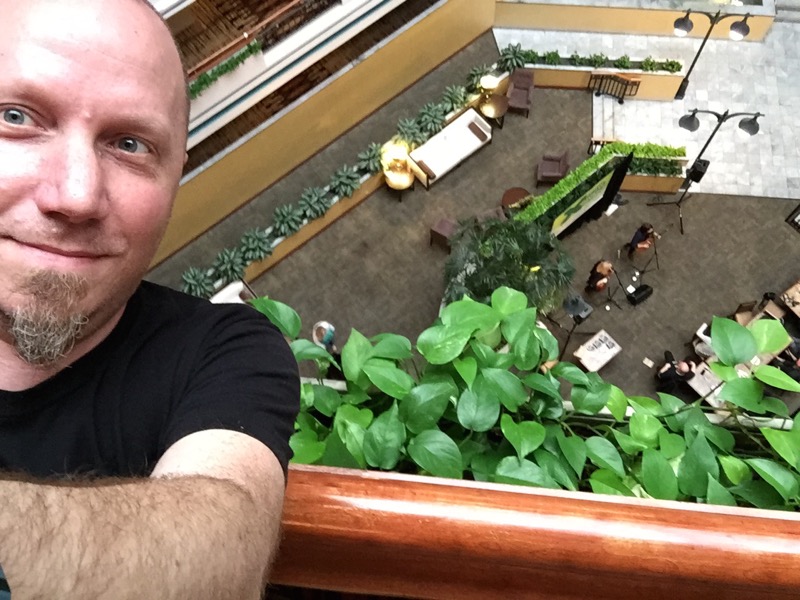
The amount of cabling assembled in Austin for this week would stretch to Ganymede and back if you could ever untangle it all.
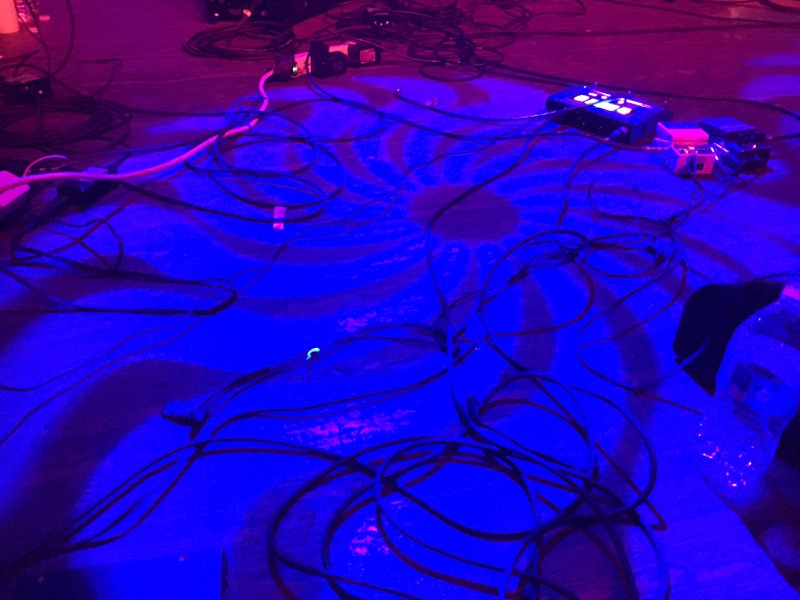
And although you are there in person, the signals that flow through these cables and the light that moves through the rooms are sometimes seemingly from separate universes. Your eyes see things like this, which is technically experimental vocal-collagist Julianna Barwick, standing off to one side of a gear-cluttered stage layering herself with delays and effects.
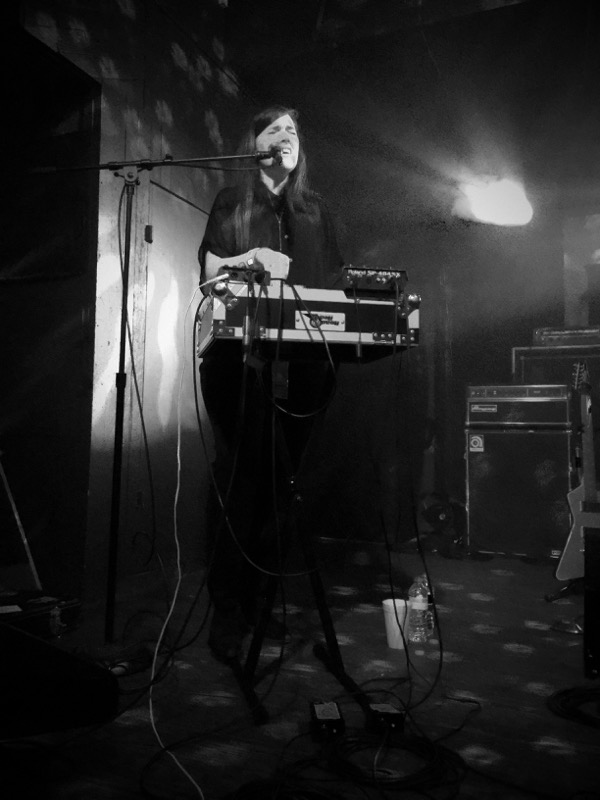
But what you hear is more like this.
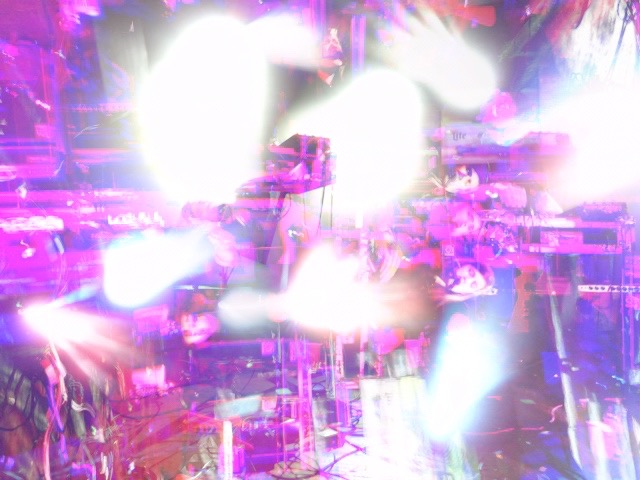
And some of it makes you hold still, and some of it makes you move.
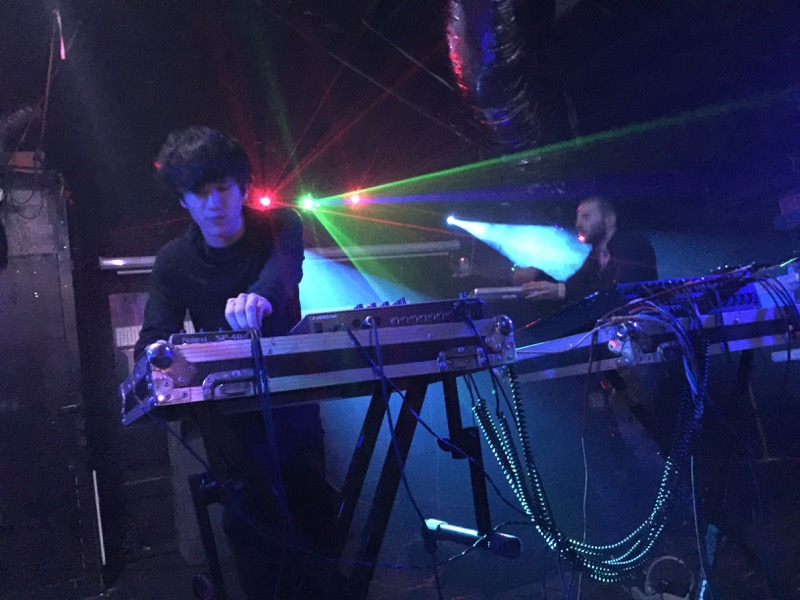
And some of it is art-punk in neon,
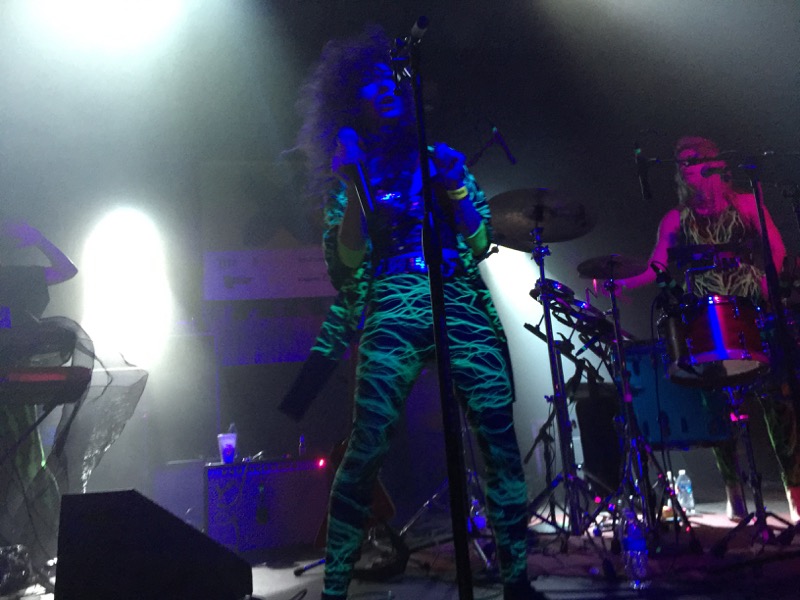
and some of it is muted by a combination of humility and terror.
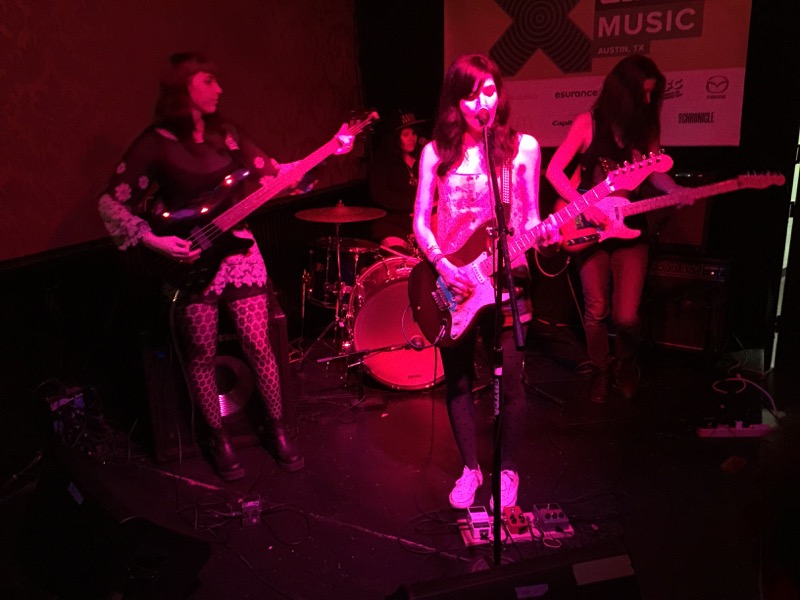
There is stage presence, and then there is whatever you call it when you inhabit a stage as if it makes you invisible.
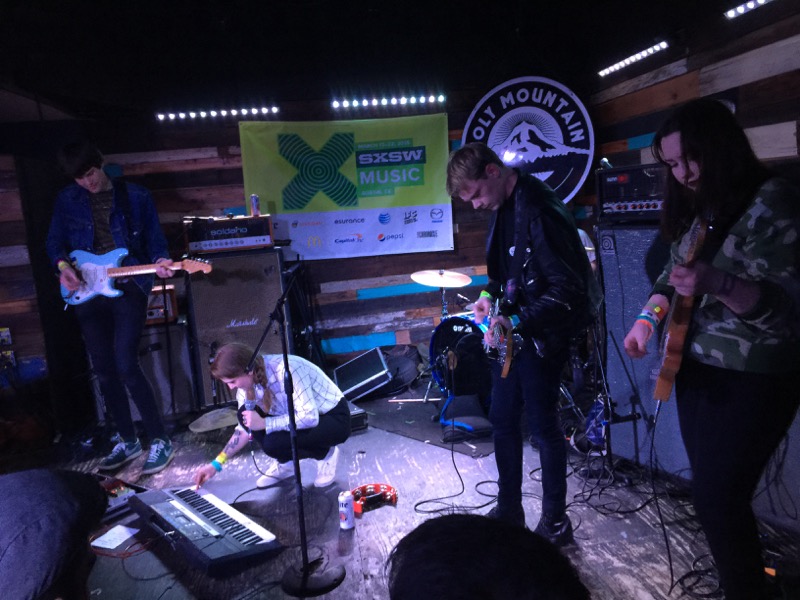
And everybody comes from somewhere,
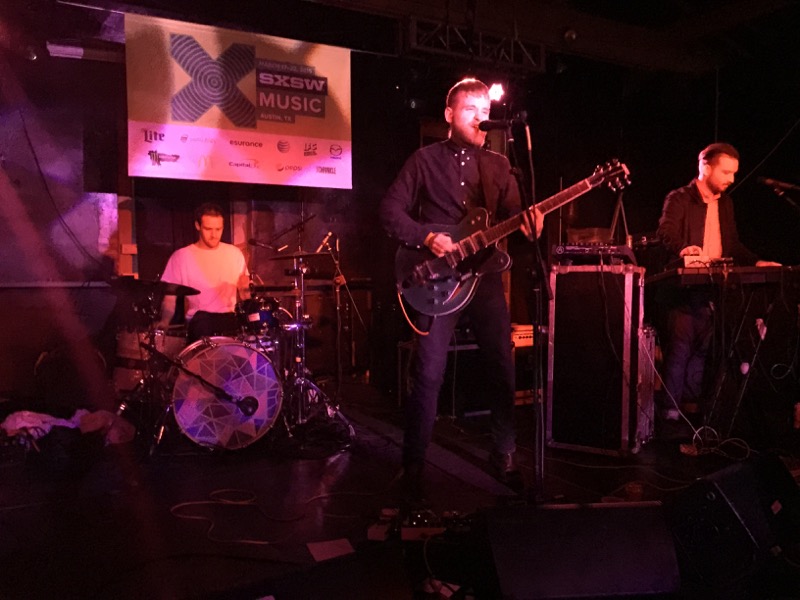
and somehow finds their own way to connect and process,
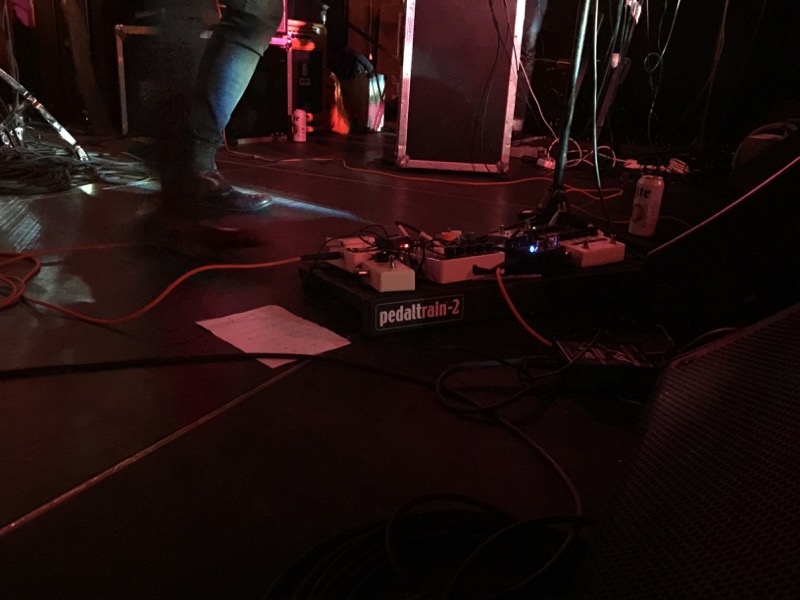
and to try to leave some sort of afterimage.
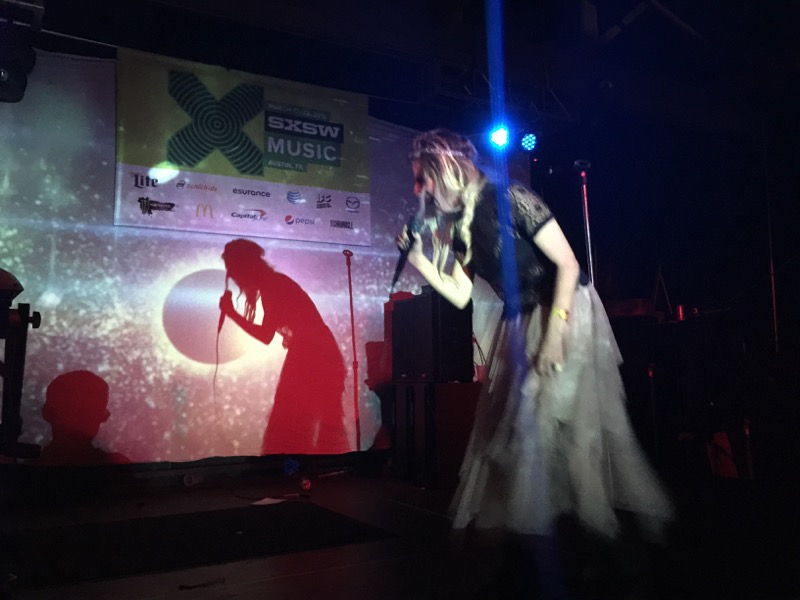
The band I planned my final night around, the night that required the most hard decisions between multiple simultaneous acts I would love to have seen all of, was the buoyant Louisiana indie-pop-rock band Royal Teeth.
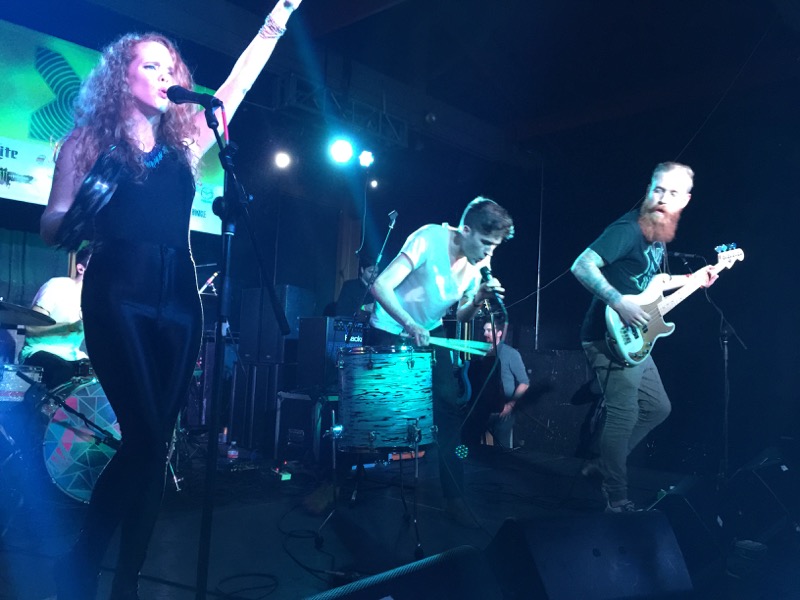
They are young, they sing in clear high voices like they are filled with too much light, and they seem to have sacrificed none of their enthusiasm to industry yet. They inhabit the borderlands where "indie" means something bigger than the independent of anonymity but smaller than the independence of autonomy, and that seems like a very hard life to me, sandwiched between yearning and toil, but for a few minutes they gave a totally convincing impression of being exactly where they most wanted to be.
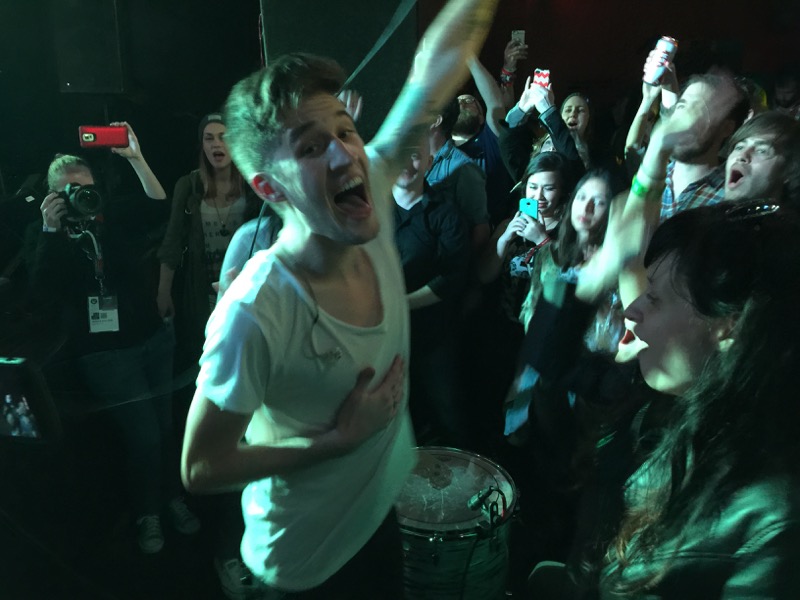
And we gather, these strange temporary permutated intersections of our world and theirs.
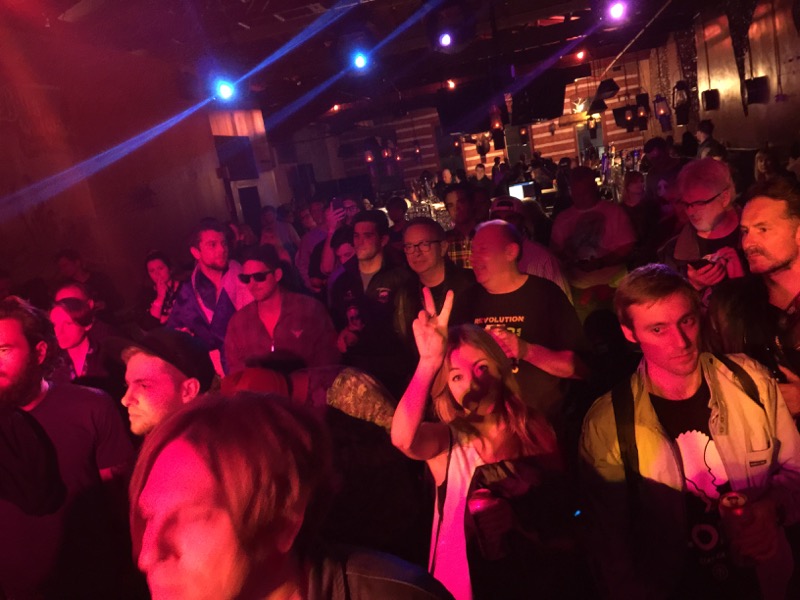
And then a moment later we are gone, and a fleeting city of art and awe is turned back over to signage and parking.
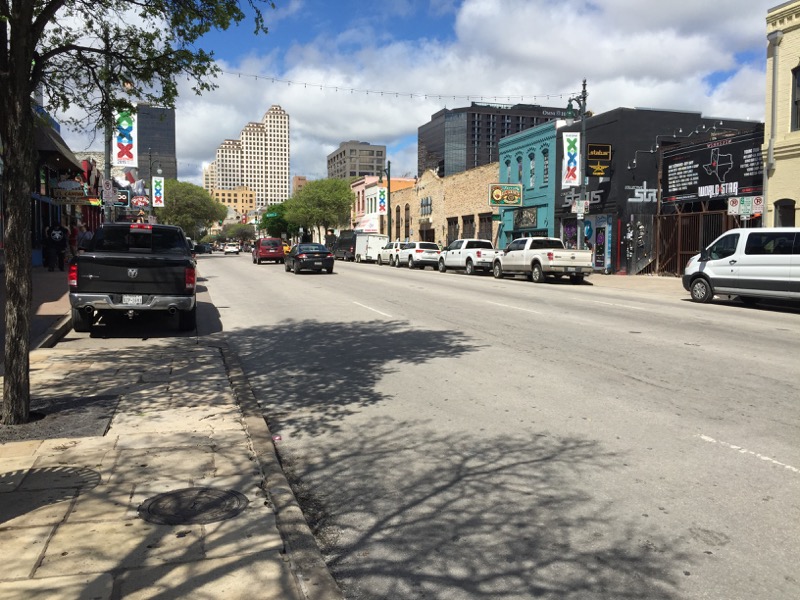
But the music remains. The music always increases, and thus in some sense joy always increases. If you let it.
Here, then, is a playlist version of my SXSW experience. The first half or so is songs from the bands I actually saw, the second half is songs from other bands who were there without me. (The people I was saddest to miss were Egyptian all-female punk/metal band Massive Scar Era, British fast-rapper Little Simz and post-world sophisto-pop duo Ibeyi.) The last track was recorded and debuted in Austin during SXSW at an unofficial showcase in my hotel room attended by nobody but me.
Listening to a playlist of studio recordings is not the same as being there, of course. Most obviously, there are no food trucks. But I am trying (as again with everything in life) to suffuse sadness that it's over with happiness that it happened.
And anyway, for the other 51 weeks of the year it is music's turn to stand in line for you.
The event itself is also daunting. Some of those 1800 bands play multiple times over the course of a few days, so at any given moment there can be dozens of performances happening simultaneously, spread out over a wide area of Austin.
The core of the experience, though, takes place in a club- (and makeshift-club-) lined stretch of 6th Street that becomes, for a few days, a near-solid mass of people. This is an unusually uncrowded moment from a rain-thinned moment early in the week.

I learned quickly that my stubborn plan to dart obsessively from show to show relied on making east/west transitions on 5th or 7th street. SXSW badges allow you to skip the lines and breeze in and out of any venue, provided you can reach them, and I had a badge from having been on a discussion panel at the beginning of the Music conference, so my project was to see as many bands as I physically could.
This wasn't quite what I accomplished, as there were a few times when I was tired enough by some point in the night that I gave up and actually sat through a bandless set-change in between two bands I wanted to see, rather than trying to squeeze in another band somewhere else. But I did see 50 bands over the course of 4 days. Not always full sets, and even the "full" SXSW sets are often short, but that 50 counts only bands whose names I knew, and was seeing on purpose, not all the incidental music I wandered through.
The music at SXSW is by no means equally distributed across the whole world's genre space, but there did seem to be at least a little of enough different things to be close enough. Even my own tiny sample included bands from Austin, Boston, Brooklyn, LA, Canada, Chile, Ghana, Korea, Taiwan, Sweden, Spain, Ireland, England, Scotland, Italy, Australia and Norway, at least, and from gleaming pop to diffident avant-garde to cyclic electronica to shredded metal.
If there was a single overarching theme to my own arbitrary 50/1800ths sample of the festival's music, it was backing tracks. Almost nobody I saw didn't have at least some prerecorded material or triggered samples mixed in with their live-performance elements. If the audiences were often fractionally present behind status posts and picture-taking, the bands were similarly at once here and symbolically here, partly performing and partly alluding to themselves by association.
At the extreme of this were the shows by various members of the PC Music collective, which were entirely knob-twiddling DJ sets. One might reasonably wonder whether this constitutes "performance" in the traditional sense. Indeed, I had no way to know whether the people on stage gingerly turning tiny knobs while bobbing industriously with the non-finger parts of their bodies were actually the people involved in the creation of the music. Nor, for that matter, whether the knobs were even connected to anything.
But there was a crowd of people there. And they were definitely dancing, there in the glittering dark, to whatever it was.

My own personal motif turned out to be Swedish women singers accompanied by scruffy sequencer-operating Swedish dudes. There were at least 6 of these at the festival, and I saw 4 of them, starting with the tiny, amazing Frida Sundemo.

This is arguably only one small step up from DJ sets, epistemologically, as Frida doesn't even move around a lot. She sings, but she does that on the recordings, too. Maybe the purpose of the concert was more for her to see us. Although if so I wish there had been more of us. This same venue had maybe 10 times as many people for the K-Pop showcase the following night.
Of the other Swedes, I didn't get pictures of the quirk-poppy Tove Styrke or the ethereal Swedish-Iranian singer Laleh, and I didn't see Tove Lo or Seinabo Sey. There were 7 if you count Kate Boy, who have an Australian singer and two Swedish dudes with matching jackets and a lot of percussion controllers and an energy-level bordering perilously on hyperventilation.

At one point I went from one of these Swedish shows straight to an African showcase (grabbing either an Australian pie or a Peruvian pork sandwich on the way, I forget which), and the Ghanaians Samini and Sarkodie both had multiple layers of backing tracks, too, but also had 20-25 people on stage at a time. A few of these were playing instruments or operating musical equipment, but a lot of them were just standing around checking their phones or arguing with each other about grammar (I assume). I guess this is how you do it in Ghana.
The most underrated features of the festival, in my opinion, were the two daytime stages inside the Austin Convention Center. The big one, from which radio simulcasts were being broadcast, was a cavernously corporate room with absolutely no personality, but excellent acoustics and reasonably comfortable seating. I enjoyed seeing the haunting Twin Shadow there much more than I enjoyed seeing them at the Spotify House the previous day amidst roiling crowds of people sparring for free food, and when Zella Day played the room I could easily imagine that the rows of orderly conference-goers were all bitter execs from the major labels she didn't sign with.
The second stage, awkwardly wedged into a much smaller room down the hall, featured a cheerfully bizarre assortment of "international" acts, and rewarded my curiosity every time I dropped by in between other events. My favorite discovery from here was the Taiwanese trad-crossover group TOFFEE, who perform with spike violin, zither, pop backing tracks, a pop lead singer and a (goofily) rapping MC.

The only way to manageably attend an 1800-band festival is to set some ruthless priorities. The top band I wanted to see was the plaintive Scottish rock group Fatherson, and the rest of my schedule moved backward and forward in time and space from their show at the North Door.

There have been a number of bands, over the years, that I have mentally considered to be the best ROCK band of the moment, and Fatherson are my current pick and the third one from Scotland (after Big Country and Idlewild). They make thick, life-affirming noises, and sing in thick accents. My wife has been spelunking through ancestry.com of late, and progressively downgrading the amount of actual Scottish heritage in my family tree (patronymy aside, I am more Sicilian than anything else), but if you measure by visceral acoustic resonance, I am plainly recently arrived from Skye or Inverness or something.
The best show I saw all week, as I could not have anticipated (or maybe I could have but didn't do enough research), was Inuk throat-singer Tanya Tagaq, who comes from one of the southern suburbs of the North Pole, and appeared in Austin with a ceaseless drummer, a violinist with a pile of effects pedals balanced precariously on a chair, and some kind of semi-fitted blanket.

On record Tanya sings with an arresting style, but still organizes the noises into individual songs. On stage, though, she mostly dispenses with this structure. The drummer starts drumming, the violin guy manages some other sounds, and then demons begin audibly erupting out of her. She writhes, the demons coil and lash and retract. It continues until they are either all subdued or all released, I'm not sure which. And then, after a short pause, it all happens again for a few more minutes. This was probably the most emotionally intense live performance I've seen since the first time I saw Tori Amos more than 20 years ago. And Tagaq's music is not metal, but this was by far the most metal thing I've seen in years.
The second most astounding show I saw was metal, at least somewhat: the largely-instrumental post-rock/metal trio Stinking Lizaveta. I knew and liked them OK from records, but only dropped in to see them because they were on my way from one thing to another. I didn't realize, first of all, that they're older than I am. Like, old enough to have the demeanor of genial grandparents who don't care what you think of their fashion sense.

And then they start playing, and if Tanya Tagaq's style is elemental, Stinking Lizaveta's is feral. Cheshire Agusta is probably not the only female post-rock/metal drummer, but she's the only one I saw at SXSW, and the only one I know who seems to play her cymbals by shouting at them with percussively palpable menace. The bass player plays a battered solid-body upright bass with parts held together by duct tape, and the guitarist jumps around with the geeky energy of an IT guy who just got a lot of boxes of network gear you don't even recognize. As with Tagaq, their live set is not particularly song-bound. As with falling off a cliff into a tornado, you'll want to have ear-plugs but that's hardly the most pressing issue.
But the soul of SXSW, and maybe of modern human existence, is that you are paralyzed by awe for an eternal moment, but then it's over and you go listen to something entirely different. At a handful of points in the week I had gaps without any available bands I already knew, and so made semi-random selections based on festival-guide blurbs and physical proximity. My favorite of these turned out to be the bubbly UK band Juce, who are kind of what the Spice Girls might have become if they'd played their own instruments and sewn their own outfits and liked Prince more.

Music follows you around at SXSW. You go back to your hotel to take a break for an hour and there are bands playing unofficial bonus shows in your hotel bathroom. Or atrium, anyway.

The amount of cabling assembled in Austin for this week would stretch to Ganymede and back if you could ever untangle it all.

And although you are there in person, the signals that flow through these cables and the light that moves through the rooms are sometimes seemingly from separate universes. Your eyes see things like this, which is technically experimental vocal-collagist Julianna Barwick, standing off to one side of a gear-cluttered stage layering herself with delays and effects.

But what you hear is more like this.

And some of it makes you hold still, and some of it makes you move.

And some of it is art-punk in neon,

and some of it is muted by a combination of humility and terror.

There is stage presence, and then there is whatever you call it when you inhabit a stage as if it makes you invisible.

And everybody comes from somewhere,

and somehow finds their own way to connect and process,

and to try to leave some sort of afterimage.

The band I planned my final night around, the night that required the most hard decisions between multiple simultaneous acts I would love to have seen all of, was the buoyant Louisiana indie-pop-rock band Royal Teeth.

They are young, they sing in clear high voices like they are filled with too much light, and they seem to have sacrificed none of their enthusiasm to industry yet. They inhabit the borderlands where "indie" means something bigger than the independent of anonymity but smaller than the independence of autonomy, and that seems like a very hard life to me, sandwiched between yearning and toil, but for a few minutes they gave a totally convincing impression of being exactly where they most wanted to be.

And we gather, these strange temporary permutated intersections of our world and theirs.

And then a moment later we are gone, and a fleeting city of art and awe is turned back over to signage and parking.

But the music remains. The music always increases, and thus in some sense joy always increases. If you let it.
Here, then, is a playlist version of my SXSW experience. The first half or so is songs from the bands I actually saw, the second half is songs from other bands who were there without me. (The people I was saddest to miss were Egyptian all-female punk/metal band Massive Scar Era, British fast-rapper Little Simz and post-world sophisto-pop duo Ibeyi.) The last track was recorded and debuted in Austin during SXSW at an unofficial showcase in my hotel room attended by nobody but me.
Listening to a playlist of studio recordings is not the same as being there, of course. Most obviously, there are no food trucks. But I am trying (as again with everything in life) to suffuse sadness that it's over with happiness that it happened.
And anyway, for the other 51 weeks of the year it is music's turn to stand in line for you.
